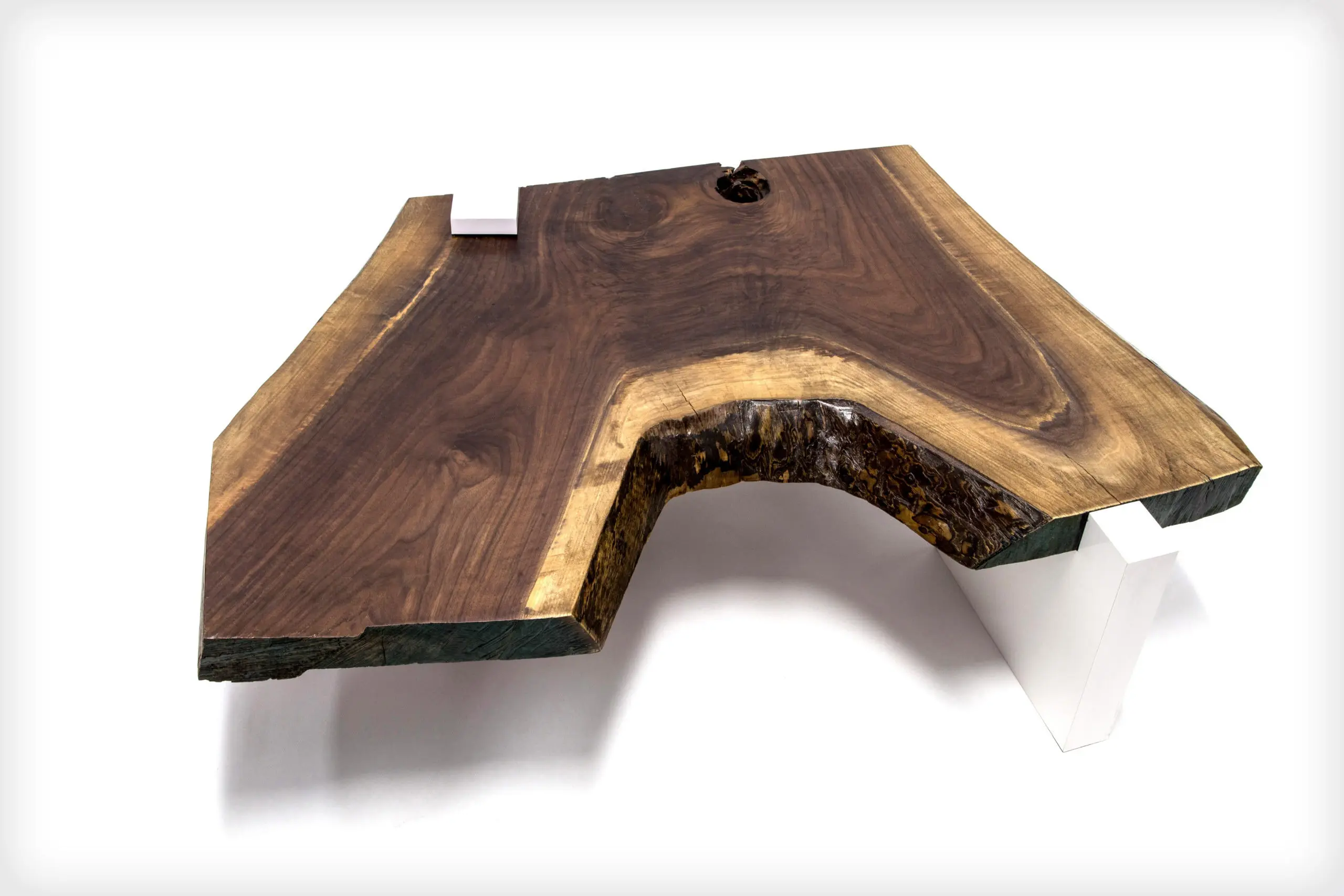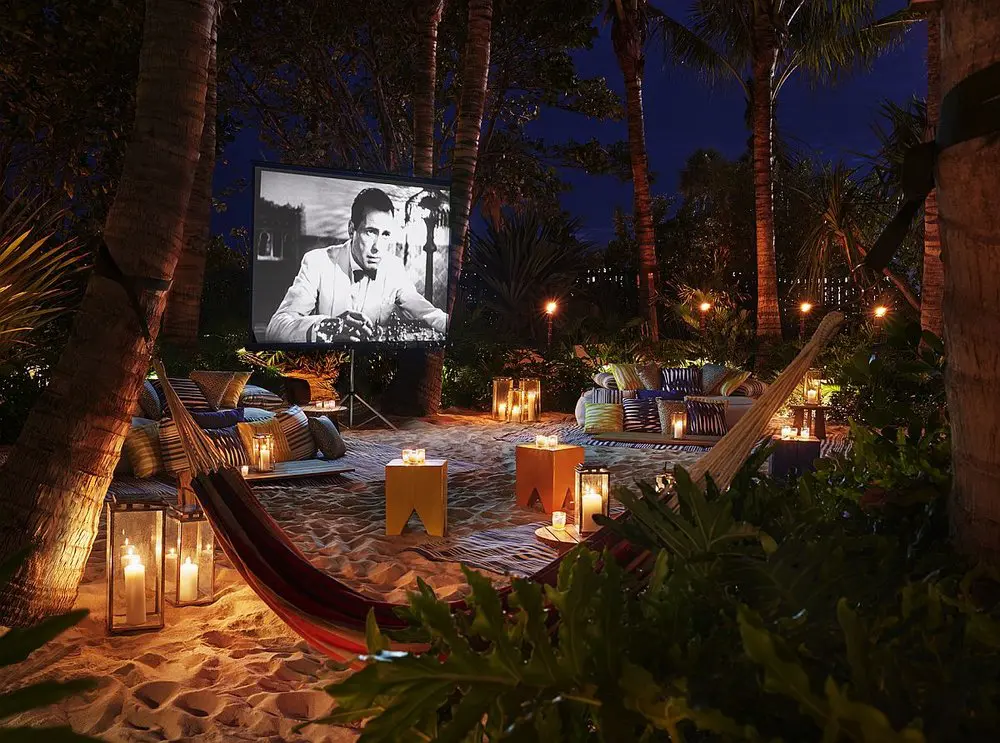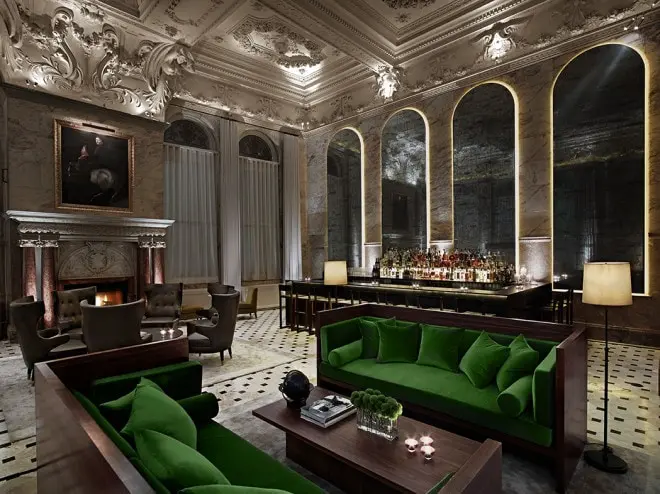Inseparable from lounge furniture and living room layouts, the coffee table design offers functional variety and stylistic abundance. In this article, we explore the historical lineage of the modern centerpiece, tracing it back to 18th-century England. By understanding its stylistic evolution and functional continuity, we cherish our contemporary models that find their way into luxury residential spaces and commercial hospitality.
The live edge coffee table, which is a staple of sophisticated interior design, is perhaps the pinnacle of this evolutionary arc, and a lively centerpiece of elegant décor. Borrowing from nature and emphasizing its organic expression, it redefines its category yet again.
But what is the lineage that has led to our contemporary diversity, including the live edge slab, the ceramic tabletop, and the modular design?
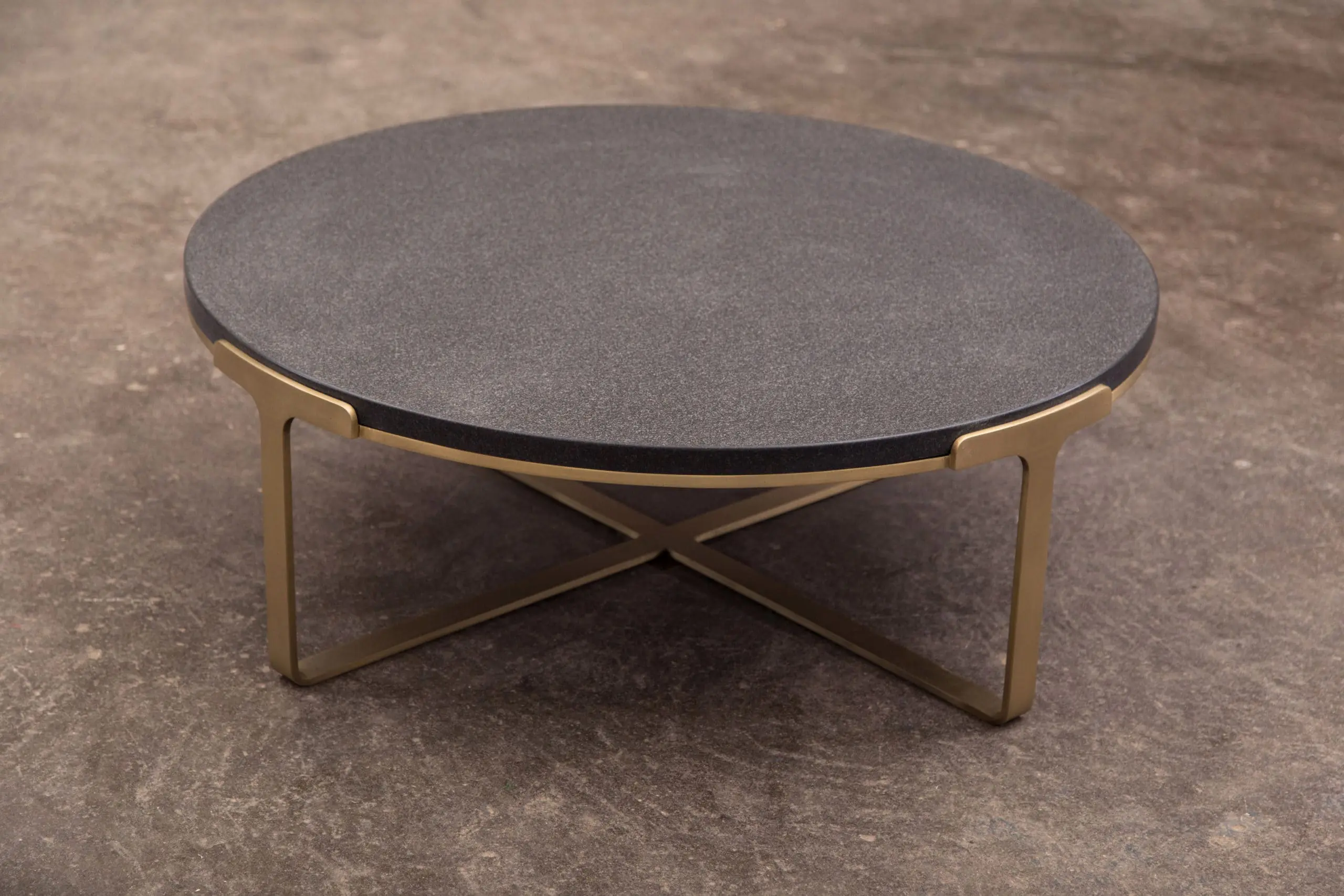
History of the coffee table
The story of the modern coffee table dates back to the beginning of the 20th century. With readily available hardwood supplies, and hydro-powered sawmills along the Grand River, Michigan was the self-proclaimed capital of furniture manufacturing. It was there, among the 50 most prosperous companies, that Frank Stuart Foote, a pioneer, added his contribution to the industry.
Starting the Imperial Furniture Co. in 1903, Foote followed the steps of his father – another furniture manufacturer – to establish a name for himself. Legend has it that the idea for the coffee table came of necessity only twenty years later when his wife asked for a novel design to entertain their guests.
Art curators would disagree with this notion, treating it as tea gossip. According to many, while Frank contributed to the popularization of the coffee table design, and indeed coined the phrase, the form itself originated two centuries prior. Known as tea tables, these furniture items were an inseparable part of English tradition, established around the Victorian Era.
Some would say that similar models existed even earlier, in Renaissance England, and there is enough evidence that popularization has spread the design as far as Imperial Japan. The name Edward William Godwin, a progressive architect-designer, pops up as well. He is credited with the early introduction of the model in 1868, by Edward T. Joy in his Country Life book of English Furniture.
According to many, historical records hint at the indelible oriental contribution as well. It was there, inspired by cultural norms and pastimes, that the overall design of the early coffee table adopted a somewhat lower appearance. Stylish and functional, it became part of the lounge furniture setup across the Ottoman Empire and beyond.
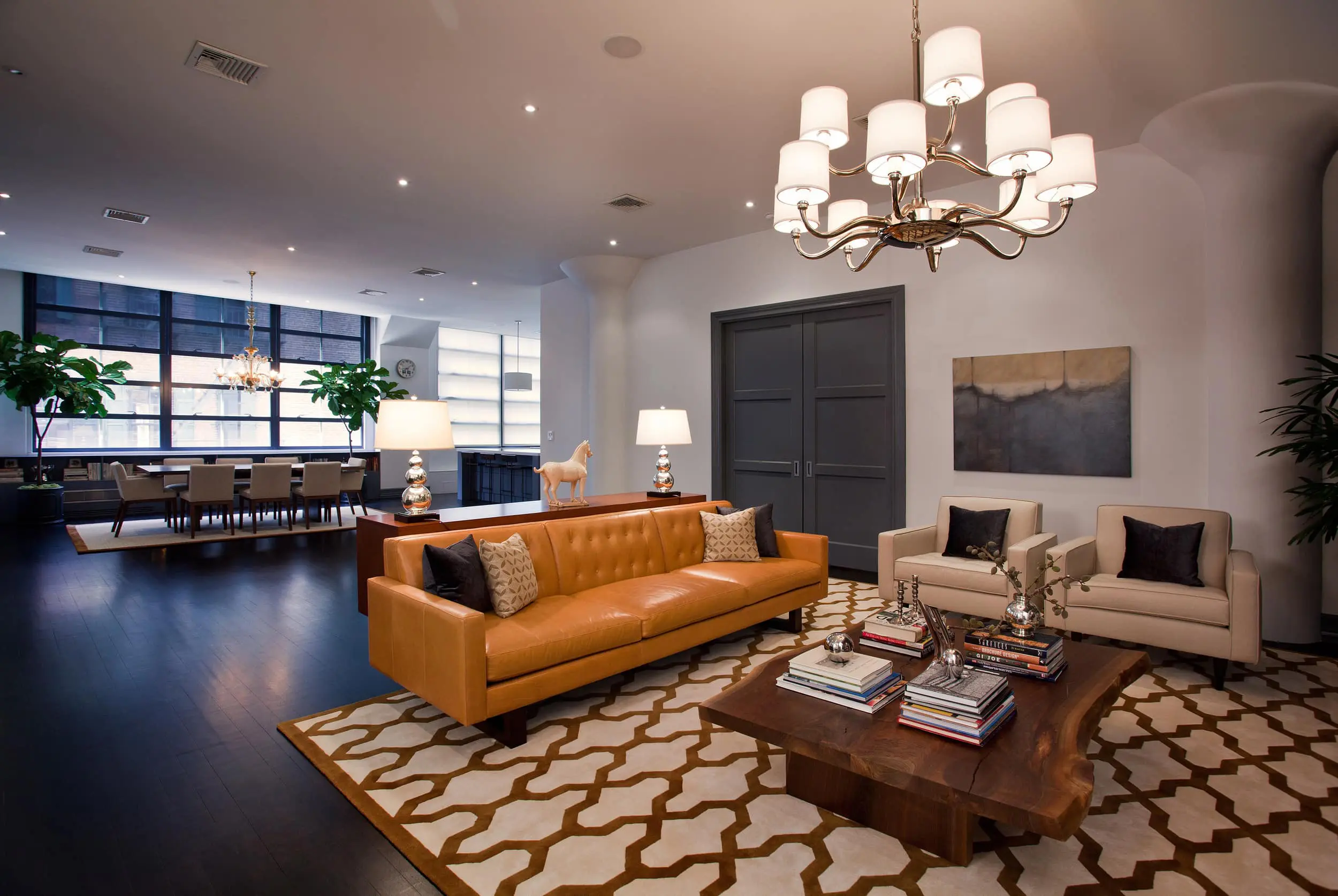
Why the name coffee table?
But why did the name coffee table proliferate so easily? The story, it turns out, has to do with a broader historical narrative. The early monikers were not synonymous with a specific use case and certainly didn’t prescribe the function. Entering common parlance, they were meant to encapsulate the stylish entertaining of guests, appropriate for the relevant era. Therefore, in order to unveil the mystery, we have to familiarize ourselves with the relevant context.
Before coffee has dethroned tea as America’s most popular beverage, the affordable herbal drink has cemented the importance of low tables, as an inseparable part of living room furniture. But the popularization of coffee has coincided with a strong wave of manufacturing, so furniture makers redefined the centuries-old model to introduce a new meaning.
Today, we use coffee tables for a range of functions, from artistic furniture highlights to practical additions within a living rooms setting, and they mostly serve as stationary islands that hold books, magazines, or TV remotes. We still use them for coffee and tea, and they still represent the focal point when entertaining guests. Inseparable from the living room sofa, the coffee table remains center-stage for most social and pastime activities.
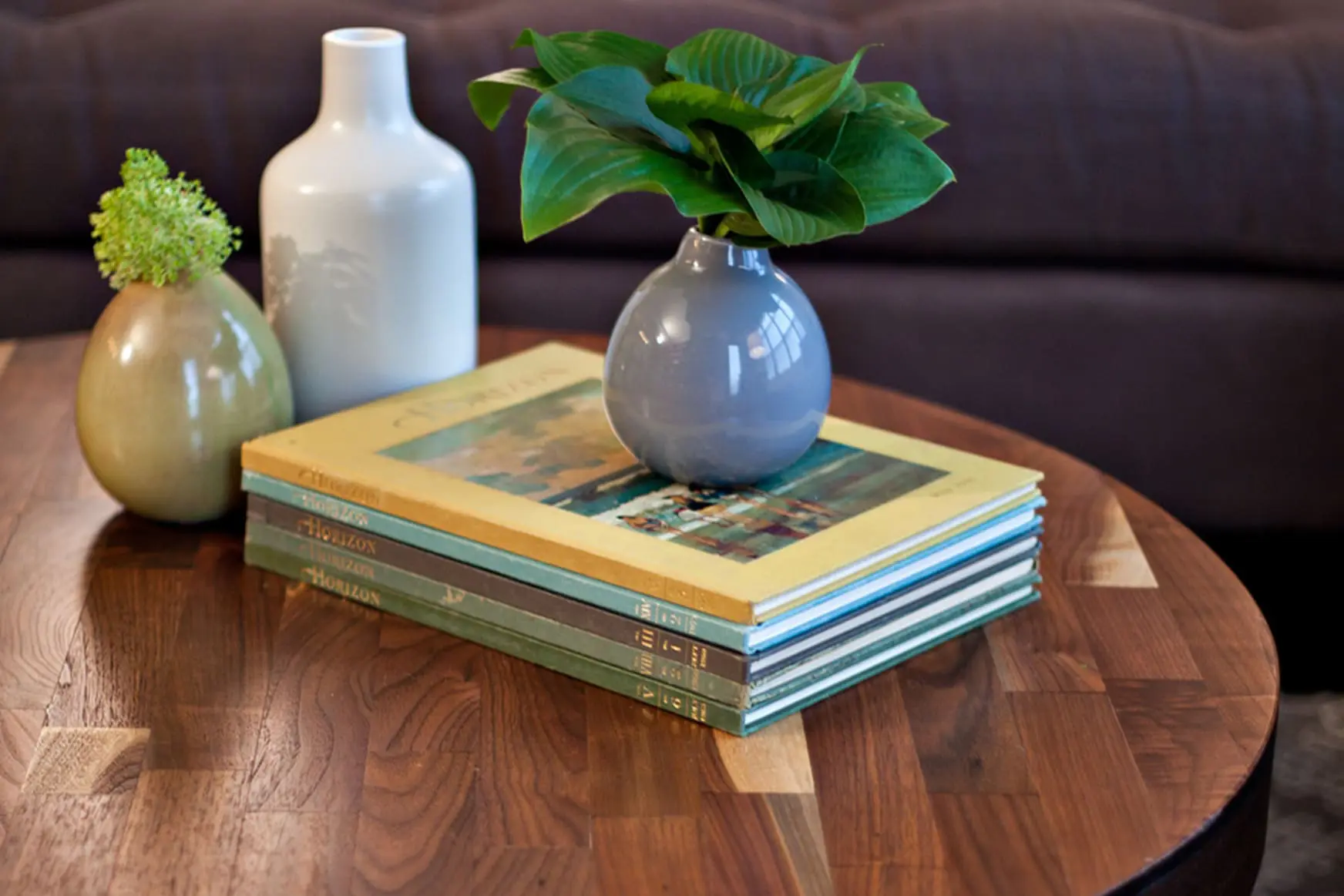
The appeal of this timeless furniture item
The Anglo-Japanese model has received wide adoption as early as the beginning of the 20th century. However, the most established design was preceded by a variety of items, each with its distinct style and function.
The early coffee tables were foldable and made exclusively of solid wood. Later came glass models with metal bases, or stone varieties that have adopted a fixed, stationary position. Given the size and weight of the original model, 18th-century designers would place wheels under the legs, giving the furniture piece a versatile function.
Centuries later, the low model became very appealing to professional interior designers, as it allowed the coffee table to slip out of view. Non-imposing, it enhanced the visual narrative of small spaces, which is why it gained mass adoption in middle-class homes.
The standards of the time are still in use today, stating that the surface of coffee tables should remain lower than the sofa. In this regard, the furniture scene has made a sharp distinction between the traditional tea table, which is positioned around 27 inches; and the much lower coffee table which hoovers around 18-19 inches and doesn’t usually surpass this height.
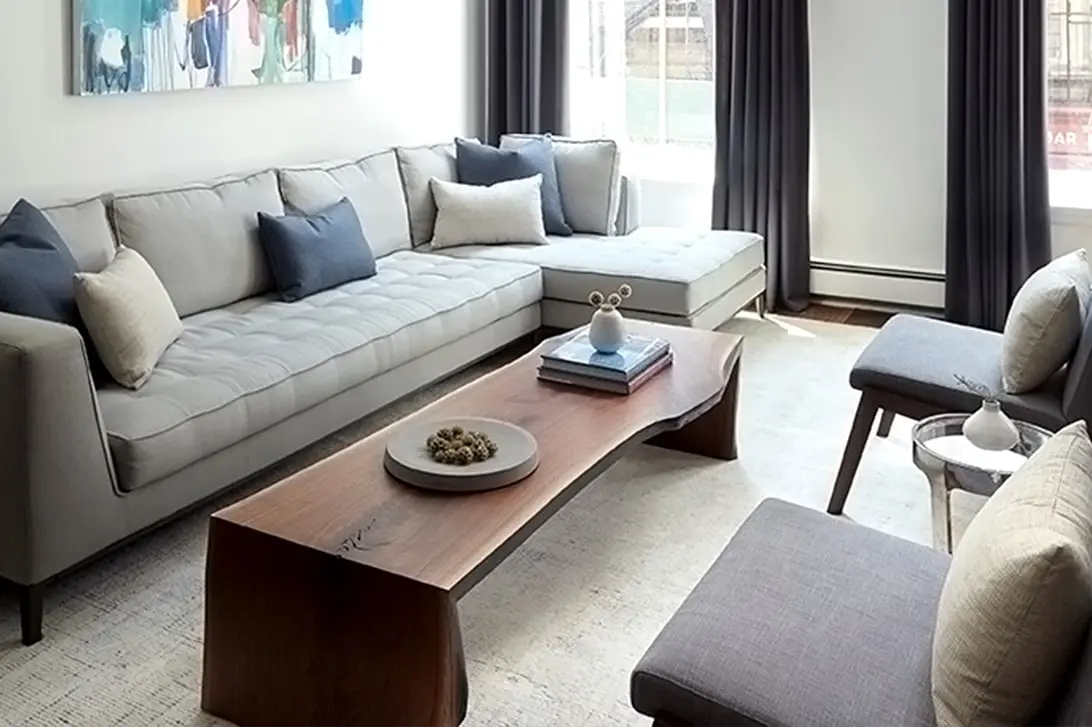
The versatility of the modern coffee table
Somewhere around the sixties, the book industry was booming, and large illustrated editions were finding their way into American homes. Unable to fit into a conventional bookshelf, these colorful artifacts gravitated toward the small table. Magazines followed shortly, bringing a visual liveliness to the room.
To many, the history of the modern coffee table pays equal credit to marketers as it does to furniture designers. By helping to spread these trends, creative people worked together to shape an evolving interior design narrative.
With cabinets and drawers, the contemporary living room table has become a versatile piece of furniture, with plenty of use-case options to accommodate the modern family.
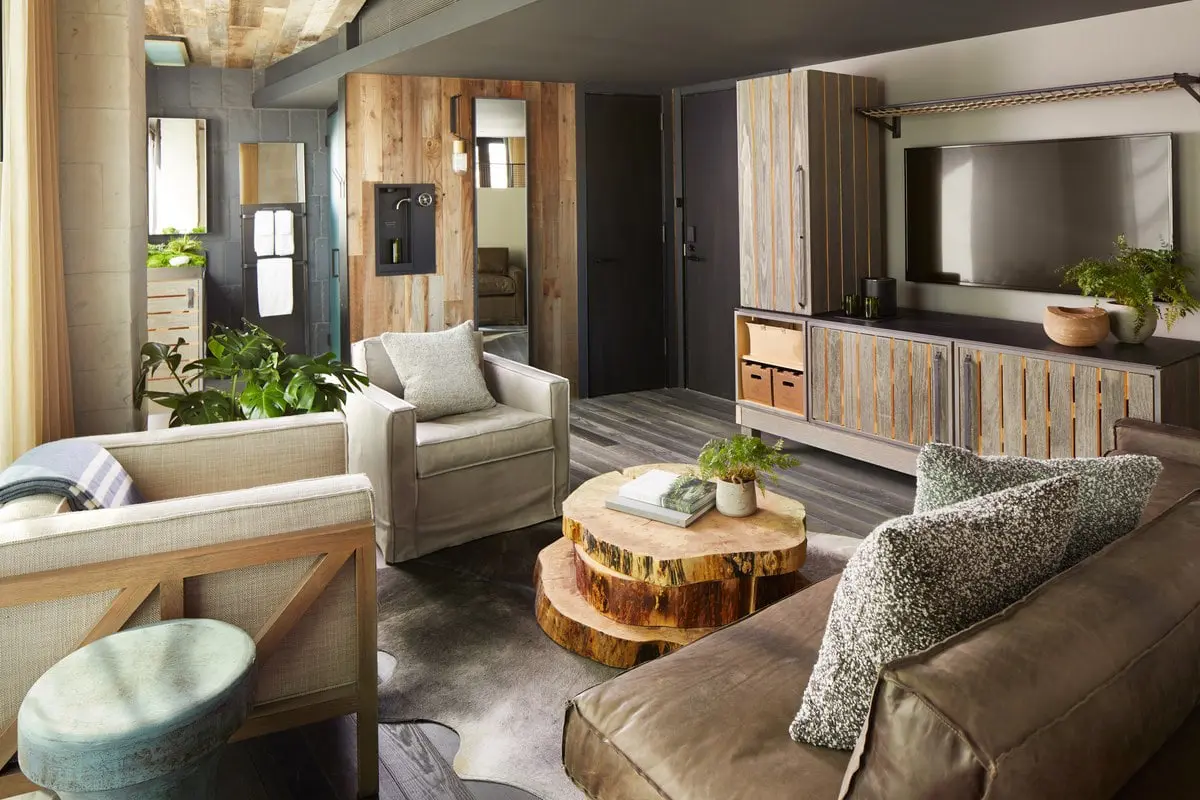
Contemporary currents in coffee table design
Designs for the luxury coffee table exist on a rather wide spectrum. From metal bases and ceramic tabletops to brass accents and organic wood, the contemporary coffee table is a sublimate of its rich history.
With modular designs, innovative tabletops, accent features, and live edge models from raw wood slabs, the industry produces a wealth of creative diversity. Designers would play with different materials and shapes to push the boundaries while borrowing from classical forms.
Contemporary types of coffee tables include the round table, the oval table, and the square model, with plenty of in-between variations such as the S-shaped coffee table and the U-shaped coffee table. Modular designs and duplicate placements are also popular, and these include unique shapes with a combination of wood and resin, a glass top, a marble top, or a sculptural base. Solid wood coffee tables usually come with metal base options, of which hairpin legs are the most widely recognized.
The table dimensions can vary greatly, to match the artistic design or the room layout. Designers also respect the stylistic constraints by trying to envision а mid-century modern or minimalist design, creating one-of-a-kind item. We have worked with many coffee table design plans, to create quality unique models. Being intimately familiar with solid wood, we take immense pride in showcasing the organic-shaped coffee table, which is becoming a staple of sophisticated interior spaces.
SENTIENT follows the high-end furniture design scene closely, to materialize every aesthetic vision. We collaborate with in-house talent from Brooklyn and independent designers from across the world, to bring unique and original pieces to life, creating a strong continuum with the American manufacturing excellence of the past century.
Our natural wood coffee table represents the pinnacle of luxury craftsmanship, exhibiting a range of premium hardwoods, including black walnut, maple, and oak. We embrace traditional woodworking methods and commit to an eco-friendly manufacturing process, to transform a range of captivating wood slabs. Through love, adequate care, and expertise, our responsibly harvested and slowly acclimated materials receive plenty of attention, as we apply the relevant wood treatment, before sanding and polishing every model. Honoring nature, we offer finishing options that emphasize the organic qualities of premium hardwoods, accentuating their grain and color to produce sophisticated works of art.

